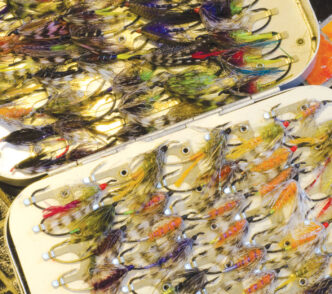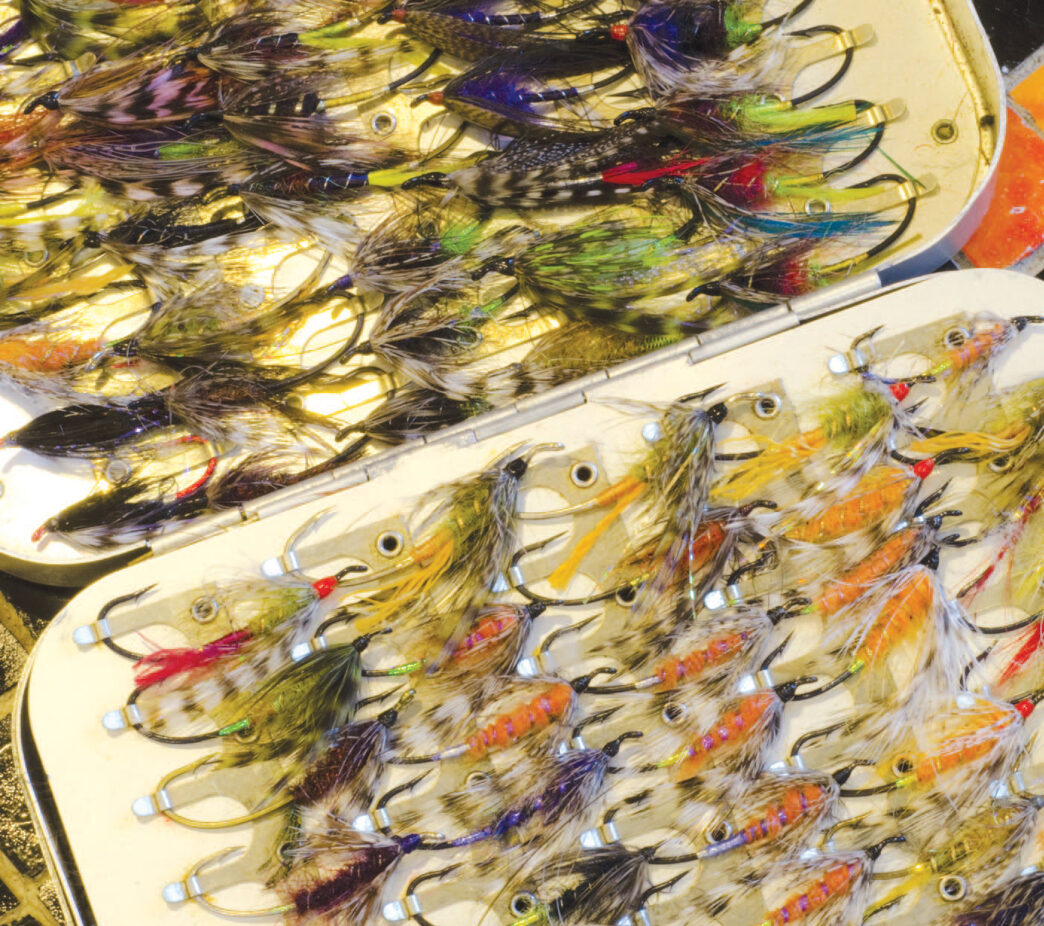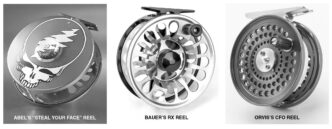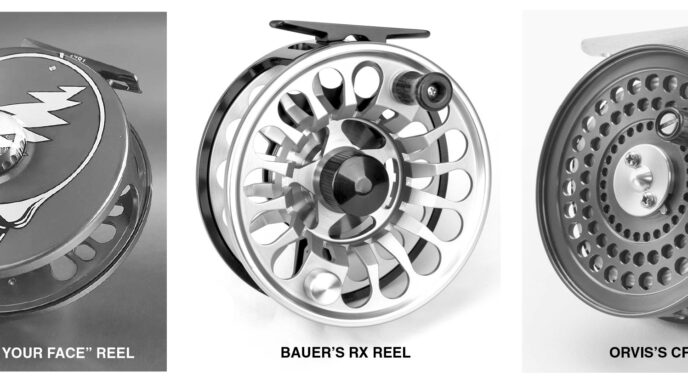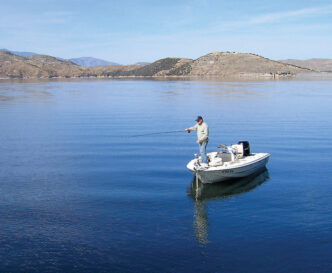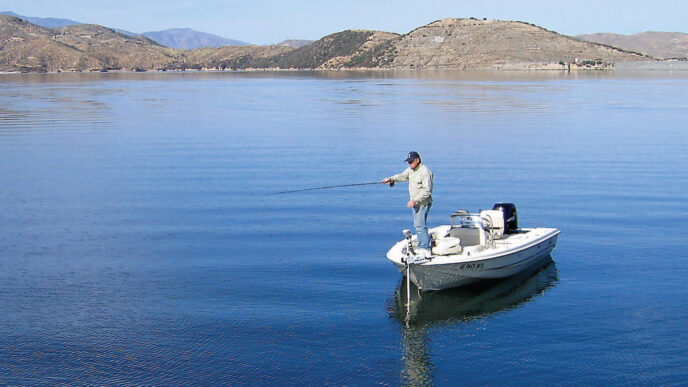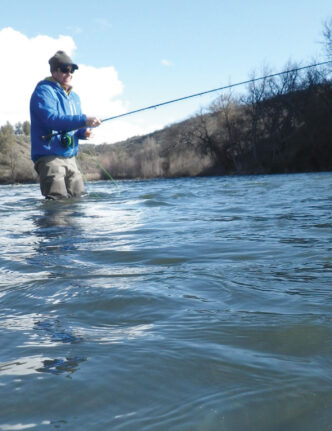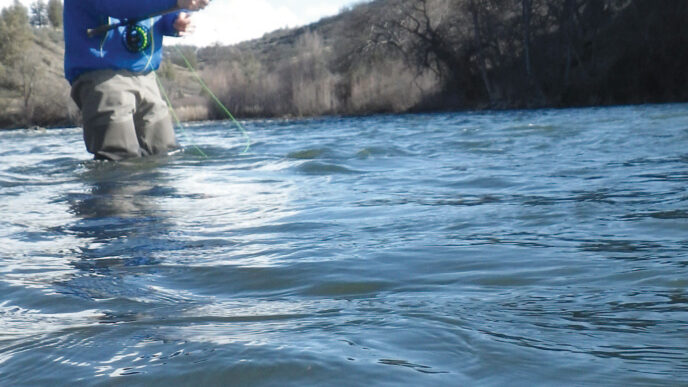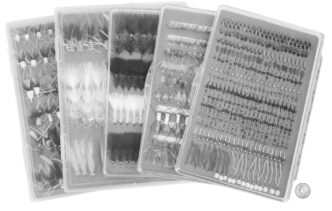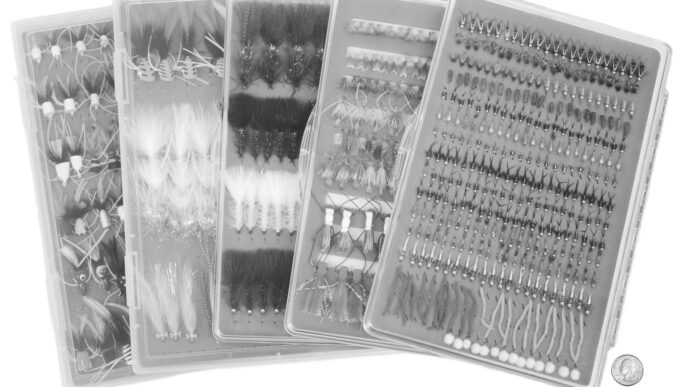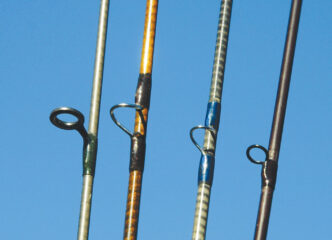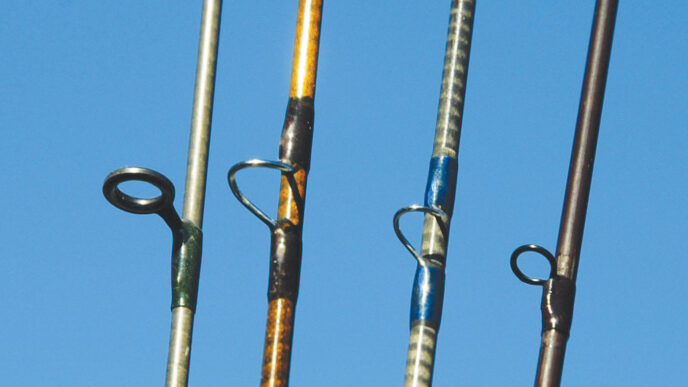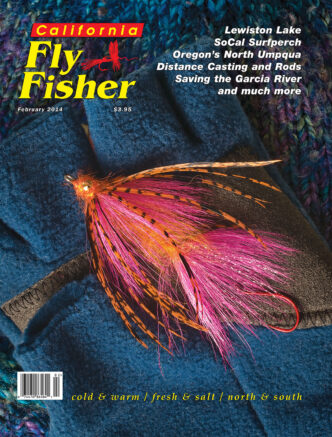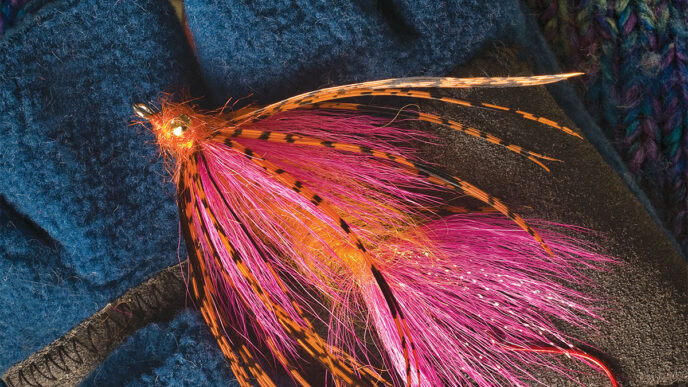I thought I might take up chukar hunting, so I called a buddy who is a chukar enthusiast and, according to some other friends, an expert “instinctive” shot, whatever that might be. I asked him for some firearm advice. He told me that he shoots double guns, classic over-unders and side-by-sides. I asked him, “What if I just use a pump or an autoloader to start with?”
“That would be like learning to fly fish for steelhead with an indicator,” he replied.
“Ah, I see,” I said, knowing exactly what he meant, as he knew I would.
I realize that this conversation makes us both sound like a couple of pretentious assholes for a whole bunch of reasons, and we are. This article is about two cool flies that this pretentious asshole really likes to use when fishing for steelhead.
My friend Jeff Bright once said to me that for him, steelhead fly fishing is mostly about culture. Jeff knows more about California steelhead fishing than just about anyone else I know under 60. The culture he was referring to is steelhead fly-fishing culture: the knowledge of the history of the sport, of the roster of participants, many of whom are dead and gone, of old gear and forgotten places on “secret” rivers. And it is especially about the history of it in California, where it arguably all got started. (I say “arguably,” because that statement is sure to cause a lot of accusations of idiocy in addition to assholyness to be directed at me from those who claim it started elsewhere, such as Vancouver Island or some other mythical place, such as mainland British Columbia.
Fly fishing for steelhead isn’t about catching fish, at least it isn’t according to skilled and cultured anglers. It is about fly fishing for steelhead.
So what the hell does that mean? One thing that it means is that it is about fishing with elegant flies that are often tied to hark back to times when it was a lot easier to catch steelhead on fancy and fanciful nonrepresentational works of the tyer’s art, swung through runs laden with fish. Or it also means just plain using old, classic fly patterns.
A very favorite fly of mine is the Silver Hilton. It’s been around for a while. According to Dennis Lee in his forthcoming book, Half-Pounders: A Steelhead Trout Life History and Fly Fishing, “The Silver Hilton is credited to Henry Hilton, who reportedly maintained a cabin near Bluff Creek on the Klamath River and created the pattern in the mid-1940s.”
I’ve also heard or read that the Hilton was invented in the 1920s, 1930s, and 1950s, but Dennis sounds authoritative enough to quote around the campfire. The Silver Hilton is surely a pure California steelhead fly, but you don’t want your history to be too definitive, because it stifles entertaining around-the-campfire arguments.
The Silver Hilton is also just a great damn fly. I’ve seen it tied in a hundred different ways, and I’d be confident fishing almost all of the variations. (See the photo of one of my fly boxes. It’s full of Hiltons.)
One of my favorite versions has for a tail a wiggly, free-flowing strand of floss, which is an adaptation taken from some version of a classic salmon fly called a Cosseboom that I saw in a photo somewhere. I tie it in as many color variations as my inventory of floss allows.
Really, the essence of the Silver Hilton is the wing made of paired grizzly hackles. To me, any steelhead fly with paired grizzly hackles for a wing is a variation of the Silver Hilton. I absolutely love the Chappie, but it really is just a Silver Hilton with an orange body and a different name. (The Chappie might just be my all-time favorite Klamath River Hilton.) For me, the best Hiltons have wings made with hackles that have stiff, thick stems. The best of all are wings from the hackles on the sides of the hackle necks. These feathers usually have stiffest stems and have a natural curve to them, which make your flies look and fish great. The cheapest necks with the fattest feathers unsuitable for most dry-fly tying often have the best feathers for Hilton wings.
For me, the Silver Hilton is a summer steelhead fly, “summer” in this case referring to steelhead fishing occurring before December 31 and in low-water conditions. Once the rivers change after the first consistent rains, it becomes winter steelhead fishing. For me there is no specific date for this. You just know it. So for me, Hiltons are usually on the smallish size and are usually not tied on heavy wire hooks. My rules.
My other all-time favorite fly is referred to by those belonging in the steelhead and music appreciation club as the Grievous Angel. But that is code. If you can figure out why it’s called the Grievous Angel, then you get the membership card and magic decoder ring. The



